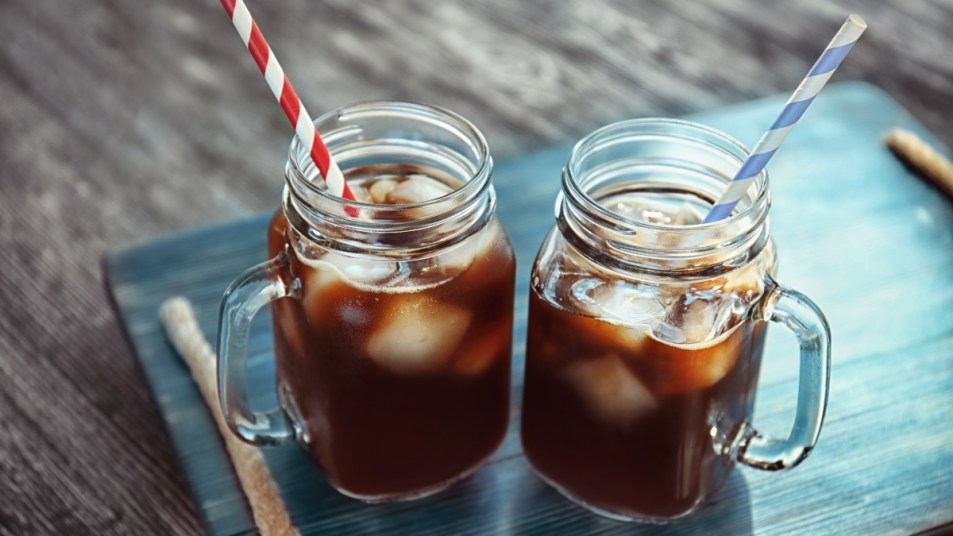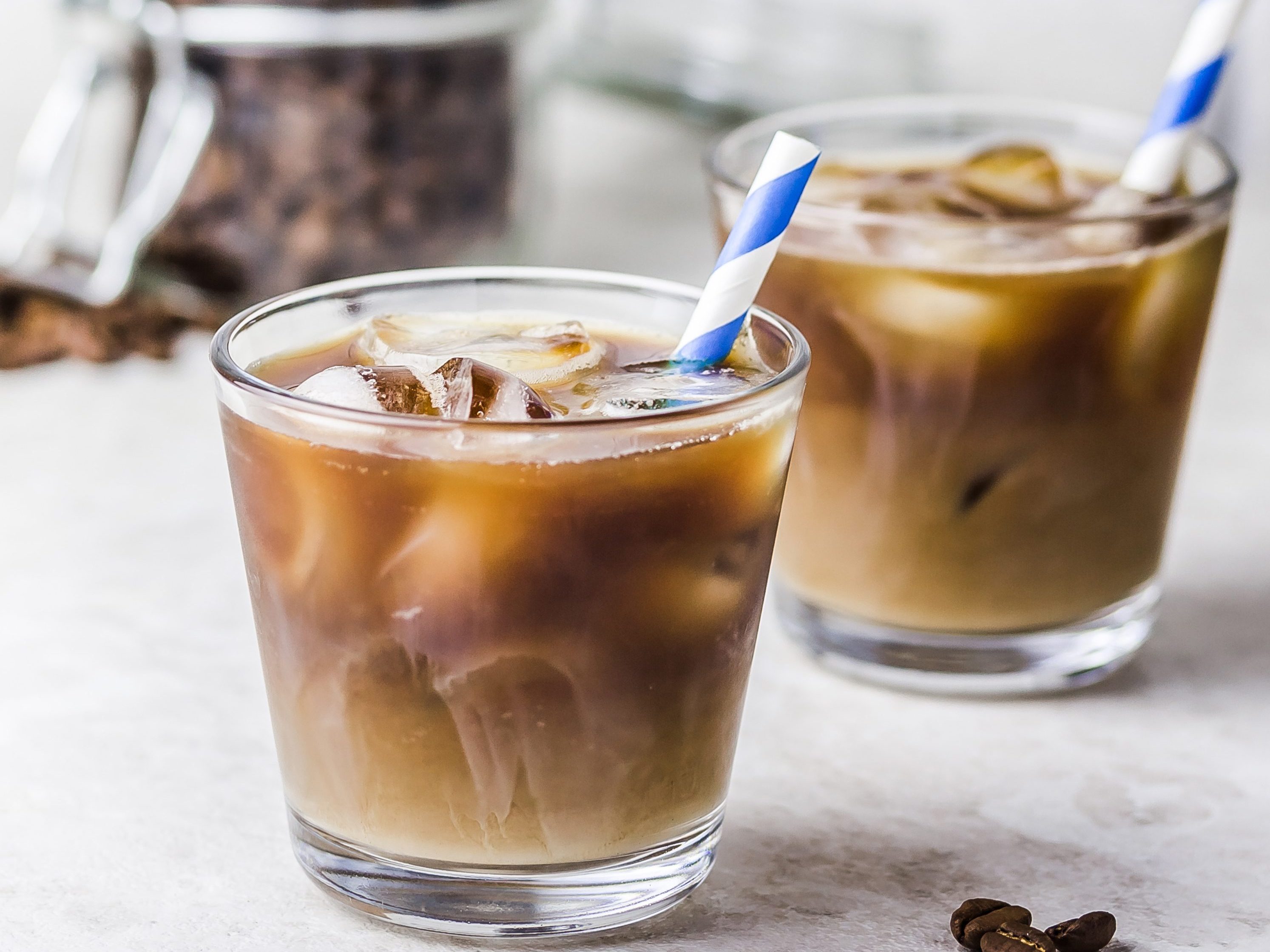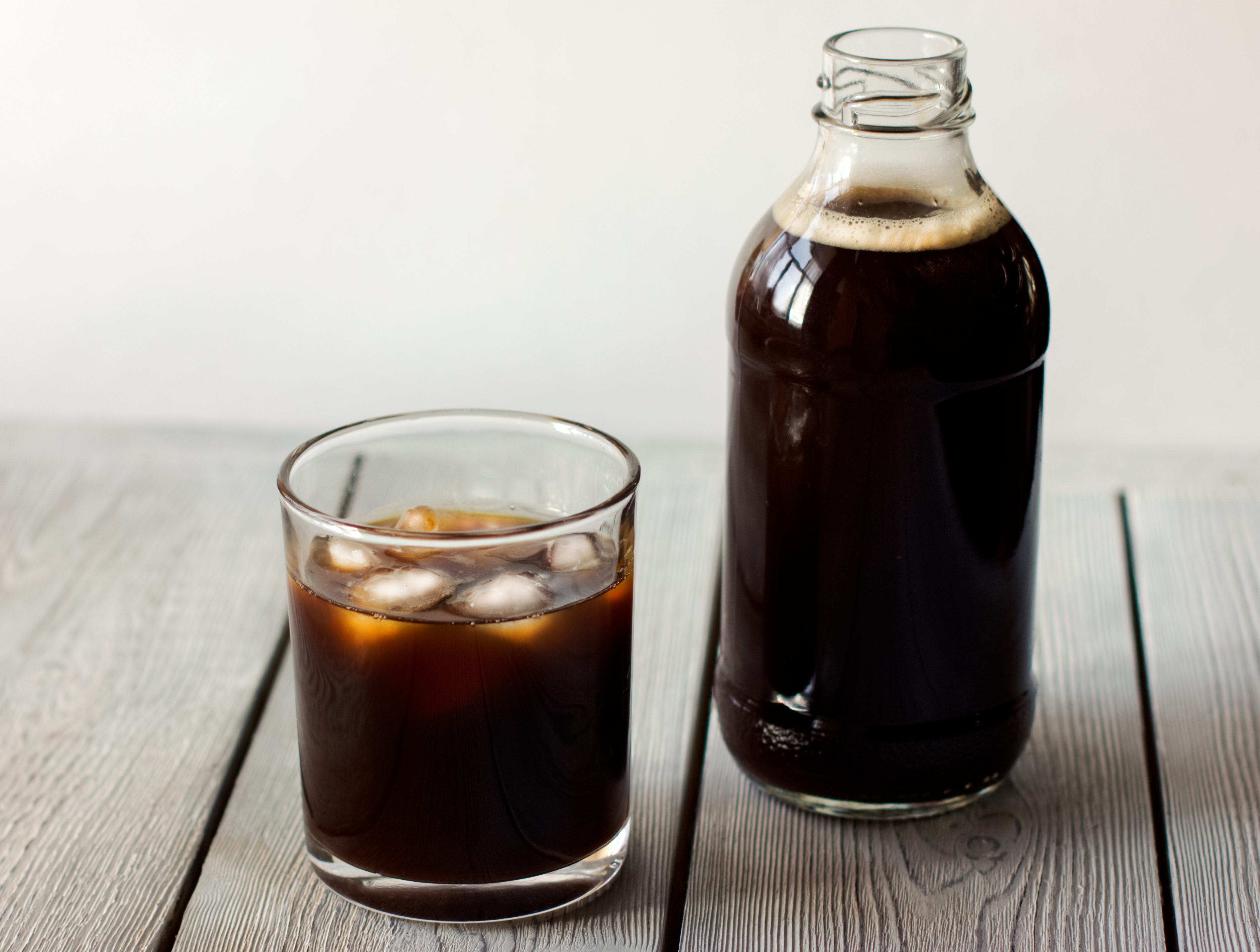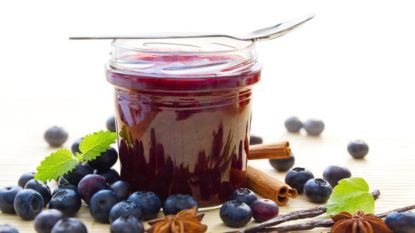Iced Coffee vs Cold Brew: Which Is A Better Pick For You? Health + Coffee Pros Weigh In
Hint: if you have a sensitive stomach and want a bigger caffeine hit, opt for cold brew

Some days there’s nothing more refreshing than a chilled coffee drink, but when it comes to ordering one, we’re never quite sure which to go for: iced coffee or cold brew. Both are delicious, but it turns out there actually is a difference when it comes to your health. And if you’ve got digestion issues, are sensitive to caffeine or have other specific needs, you’ll want to choose carefully. Keep reading to learn about the health benefits of coffee, what pros say are the differences between iced coffee vs cold brew, and how you can make both at home.
The health benefits of coffee
Iced coffee and cold brew are both made with the same basic beans — and that means they both have some pretty amazing health benefits:
1. Optimizes liver function
Compounds called polyphenols in coffee boost the liver’s ability to convert fat into usable fuel, report scientists in the journal Diabetologia. The payoff: Subjects who drank coffee daily lost 5 percent of their body weight (that’s 7.5 pounds for a 150-pound woman) and up to 7 percent of the dangerous fat in their liver after 8 weeks.
2. Boosts metabolism
Caffeine revs the body’s process of burning calories for heat, called thermogenesis, by 11 percent for up to 3 hours, according to a study in The American Journal of Clinical Nutrition. People who drank just one cup of coffee daily burned an extra 150 calories per day — that’s the equivalent of losing 16 pounds per year. (For even more weight loss benefits, check out our story on protein coffee.)
3. Sharpens thinking
Drinking daily coffee can keep you on your A-game, report Johns Hopkins University researchers. That’s because the caffeine in the brew activates norepinephrine (an energizing hormone that speeds thought processing) and stimulates activity in the brain’s memory hub.
Click through to learn about even more health perks of drinking coffee daily.
Iced coffee: when it’s better for you

Iced coffee is made by cooling down standard hot-brewed coffee with ice or in the refrigerator. It’s quicker to make than cold brew and can be more faithful to the intended flavor of the bean, according to coffee expert Chris Clark of BrewCoffeeHome.com. How so? Since iced coffee is made with hot coffee that’s been brewed over a short period of time, “it is better for preserving the beans’ original flavor profiles and complexity,” he says.
Using hot water to brew coffee also extracts more nutrients from the beans than cold brewing. And studies show hot-brewed coffee contain more antioxidants (compounds that prevent cell damage that can lead to chronic disease) than its cold-brewed counterpart. “Coffee has a lot of antioxidants. If you drink it in moderation, research shows it can be pretty good for you,” said study author Megan Fuller, PhD. “We found the hot brew has more antioxidant capacity.”
One caveat to the hot-brew method is that heat tends to make the coffee more acidic, which not only tastes more bitter but can also cause gastrointestinal issues. This may result in extra bathroom trips and fatigue. “Acidic coffee upsets your natural gut flora, which actually makes you feel sluggish,” cautions Eva Cwynar, MD, author of The Fatigue Solution.
How to make iced coffee
Check out this method for creating the best iced coffee from Maurice Contreras, founder of Volcanica Coffee.
- Brew regular-strength coffee, then freeze it in ice cube trays.
- Fill glasses with the frozen coffee cubes and pour regular-strength hot coffee over them.
- Add sugar or cream if desired.
Using coffee ice cubes instead of regular ones keeps the coffee from becoming diluted. As the ice melts, it simply turns into more coffee! If you don’t have time to make coffee ice cubes and prefer using regular ones, Contreras recommends pouring extra-strong coffee over the ice instead to avoid diluting. (And for a flavor boost without the extra calories, try making your own skinny syrup.)
When to drink cold brew

You might think cold brew and iced coffee are the same drink since they’re both, technically, cold brews. However, the “cold” in “cold brew” refers to its brewing method — not its serving temperature. “Cold brew is made by steeping coarsely ground coffee beans in cold water for an extended period, typically 12-24 hours,” says Clark. “No hot water is involved in the brewing process.”
Because no hot water touches the coffee, less acid is extracted from the beans. “This cold brew process creates a fundamentally different taste profile than regular or iced coffee,” explains coffee roaster Marko Lazarevic of Craft Coffee Spot. “Since you aren’t scorching the beans with hot water, cold brew tastes less acidic, less bitter and more mellow,” he adds. “It is usually easier to drink cold since the flavors aren’t as sharp as regular coffee.” It is strong, though, since it’s steeped for so long, so cold brew is often diluted with water before consuming.
As far as health benefits go, cold brew also has all the heart-healthy polyphenols and metabolism-boosting powers as regular or iced coffee (just fewer antioxidants as described above), but it’s likely to be gentler on your tummy since it’s less acidic. “Cold brew is better for your stomach and people with IBS or other gastrointestinal issues,” says Lazarevic.
Also, if you’re looking for extra caffeine, cold brew is your better bet: “Cold brew usually has more caffeine than iced coffee due to the longer steeping process because it is brewed with a higher ratio of coffee to water,” says Contreras. “The concentrate that is made can have considerably more caffeine than the same volume of hot or iced brewed coffee, even espresso.”
How to make cold brew
Because it takes so long to make, cold brew is often easier to purchase in a pinch than make. But if you want some café-quality cold brew from home, you’re in luck. Lazarevic shares his favorite simple method for making it:
- Measure a 1:8 ratio of coffee to water (typically 4 tablespoons to 2 cups water)
- Pour into a container with a lid, mix and cover
- Store in a cool, dark place (since light degrades coffee) for 12 hours
- When done steeping, stir, and pour through a strainer or cheesecloth to filter out the grounds
- Dilute with water and ice to your liking
Lazarevic adds that it’s important to use coarsely ground beans when making cold brew — “it needs bigger grounds since it steeps over a longer time.”
Ready to start brewing? Check out these articles for more advice on making the best cup of coffee:
Hate the Bitterness of Regular Coffee? Try Brewing a Honey Processed Variety
Why Does My Coffee Taste Bitter? (And 6 Ways To Balance the Flavor)
This Easy Coffee-Making Method Will Give You a Perfect Cup of Joe Every Time
Olive Oil Coffee: The Delicious New Trend Nutrition Pros Say Is Actually Good for You
Cacao Coffee: You Won’t Believe Something This Delicious Can Be So Nutritious!













